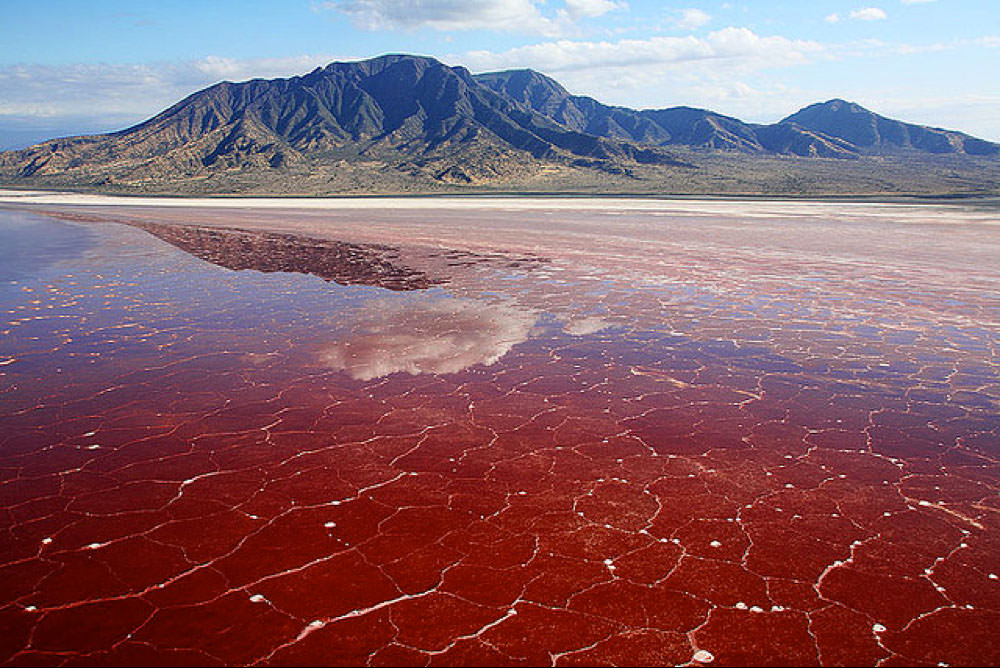
If the salinity of the lake decreases, the cyanobacteria will also decrease and cause a loss of habitat for the endangered flamingos. In fact, bringing in fresh water would greatly upset the ecological balance of the lake and many in Tanzania have actively fought against bringing in water from the Ewaso Ng’iro River. Amazingly, 2.5 million flamingos make Lake Natron their home and it is considered one of their only breeding grounds, making preservation of the lake an environmental concern. This algae growth has also fostered the developments of Lesser Flamingo nests.

Water is supposed to give life, yet this salty world seems content to make life almost impossible… almost.Īlthough most species cannot handle the 120-degree lake water, cyanobacteria have made Natron their home and turned the lake its trademark reds and oranges. The saline environment of Lake Natron certainly qualifies. Although most human settlements throughout history have formed around lakes and rivers, the barren landscape around Lake Natron tells a clear story of a place no one ever wanted to live.Īfrica’s Great Rift Valley is known for some of its environmentally extreme regions such as the Erta Ale and Dallol. This body of water is one of the most inhospitable areas on Earth.Ĭolored a deep red from salt-loving organisms and algae, the lake reaches hellish temperatures and is nearly as basic as ammonia. Due to its unique biodiversity, Tanzania has included the Lake Natron basin in the List of Wetlands of International Importance since 4 July 2001.Don’t let the ring of salty marshes along the edge of Lake Natron fool you. This is one of the only alkaline lakes in Africa and its waters do not flow into other lakes and oceans. Being one of the few animals that can survive. In addition to this species, tilapia also occupy the lake’s hot springs. The reproduction of flamingos grows every day, since the greater the salinity of the lake, the greater the number of bacteria, and consequently, the flamingo nests increase in the region. They manage to survive in this region and feed on the cyanobacteria in the lake. The high mortality rate does not seem to frighten some species, such as the lesser flamingos. In the heat, when the water level drops further, the dead animals are left on the shores of the lake – left just as photographer Nick Brandt found them. Another factor that interferes is the temperature, the lake is in a very hot region, and its waters can reach up to 60 degrees, causing burns in the animals. The water level is naturally low, causing many birds, bats and insects – that try to cross the river, to end up falling and dying. Since the beings that die there are preserved and automatically become salt statues. Sodium carbonate was already used in mummification processes in Egypt, which gave the animals killed in the lake the reputation of mummies. This was caused by a volcano that is to the south of the lake, causing the ash runoff to run into its waters. This is due to sodium carbonate and other minerals, which end up in the lake, as a result of materials that come from the hills next to the river.

#LAKE NATRON TANZANIA SKIN#
The high caustic level can cause great damage, burn the skin and eyes of animals. The lake waters have an extremely alkaline pH, which is between 9 and 10.5. in salt and lasts forever”.Īccording to the American television program Discovery News, this has a scientific explanation.

Just like birds colliding with glass windows, these fell into the lake.”ĭavid Harper, an ecologist at the University of Leicester who has visited Lake Natron four times, came to a conclusion in his research on the site: “If a body falls somewhere else, it decomposes very quickly, but at the lake’s edge, it gets encrusted. No one is quite sure exactly how they die, but it seems that the lake reflects light a lot and this confuses them.

In the post titled All Over the Wasteland, the photographer wrote: “I unexpectedly encountered the creatures – all manner of birds and bats – along the shores of Lake Natron in northern Tanzania. The photographer and expert on the African continent, Nick Brandt, produced some images of the statues of animals that died in the lake, his work went viral on the internet and generated curiosity to understand what this lake has. But appearances can be deceiving: its waters hold a fatal secret.ĭue to the rare chemical composition, the lake ends up petrifying the animals that enter it. Lake Natron, situated in northern Tanzania, close to the Kenyan border, in the Great Rift Valley, is one of the most peaceful places in Africa.


 0 kommentar(er)
0 kommentar(er)
